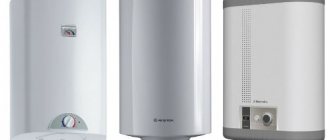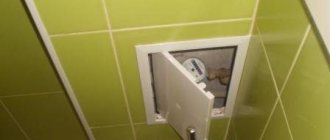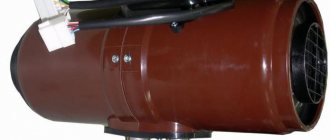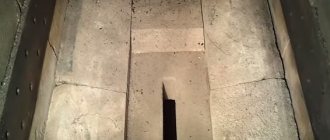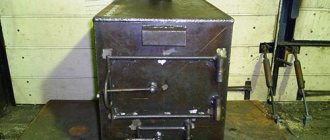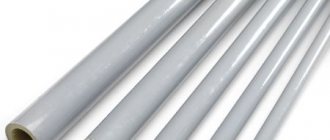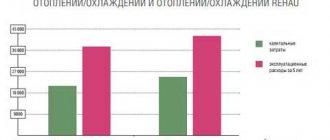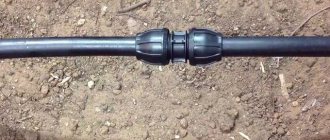What is remarkable about REHAU pipes
Modern pipe production technology gives the finished products special properties:
- Improved sound insulation. Thanks to cross-linked polyethylene, it is possible to better absorb sounds created by the movement of water in the system.
- The connection of REHAU pipes is as strong as possible due to the special method of their installation.
- The material has universal properties, thanks to which such pipes can be used to construct cold and hot water supply systems and heating circuits. Plastic can serve at water temperatures up to 95 ℃.
- Cracks do not appear on the pipes over time, they do not change their shape due to mechanical stress, which makes it possible to lay them under plaster and other structures.
- High thermal insulation qualities – saving of natural resources is possible.
- Operation of pipes is possible under conditions of changes in water temperature and pressure in the system.
- Absolute safety for the human body. This is confirmed by relevant certificates.
- The special very smooth coating of the inner walls of the pipes does not allow plaque to accumulate on them, which could thereby reduce their throughput.
REHAU pipes and all kinds of fittings are suitable for creating pipelines of varying complexity. The disadvantage of this product is its high price.
Are they really better?
To understand whether the installation of REHAU pipes can really completely replace everyone’s favorite polypropylene and metal. It's worth starting with the material of manufacture. Cross-linked polyethylene is used for REHAU pipes. At the molecular level, a three-dimensional network is formed, which ensures the connection of all links. The end result is a bay that is uniform throughout its entire length. The advantages of this solution can be considered:
- non-toxic. The polyethylene itself in the product does not release harmful impurities into the water;
- no noise when passing water;
- versatility of the material for various systems;
- unique and simple pipe installation system “REHAU”;
- resistance to deformation and ruptures;
- high plasticity;
- minimal heat loss;
- resistance to pressure and temperature changes;
- special design and coating of the internal walls, which prevents plaque.
From the above, it becomes clear that installation of REHAU pipes is possible both in old houses and in new buildings. The products do an excellent job of transferring hot and cold liquids. This means that not only heating is easy to do using REHAU pipes, but also plumbing. Moreover, they can be laid in any configuration. REHAU pipes are easy to adjust to the line of walls and openings.
The company has developed several types of products, which allows you to quickly make a choice and determine the best price-quality ratio for a particular object. The “HIS” line is suitable for supplying any non-aggressive liquids with temperatures up to 70º. Used for heating systems with tight media control. The “REHAU Flex” subtype is also suitable for laying heating and water supply, the maximum possible pipe diameter is 63 mm. "REHAU Stabil" is able to hold its shape better, therefore it is used when installing water collection points. The peculiarity of this REHAU pipe is explained by the small layer of aluminum. The pink series “REHAU Pink” is used exclusively for heated floors or general wiring of the heating system. They are very plastic and require fixation with fasteners. They feel great under screed and plaster. Withstands temperatures up to 90º and pressure up to 10 atmospheres.
Before installation
To provide everything for the user of REHAU pipes, the company has also developed special pipe installation tools and fittings. This means that it is important to familiarize yourself with the product range in order to improve efficiency and use recommended components, which will only increase service life. Tools you will need:
- expander or expander;
- REHAU press;
- specialized scissors;
- roulette;
- marker for marking.
The REHAU expander is a device similar to a rivet gun. Only its tip is a sharp cone, which is inserted directly into the pipe. His role matches his name. It increases the diameter of the pipe ends or flares them for ease of interaction with fittings. The kit can be supplied with a set of nozzles for different diameters of REHAU pipes.
The REHAU press is like an enlarged and modified pliers. It allows you to press in the consumable material, as well as pull the pipe to the required fixation mark. It also has attachments for different diameters. Such a device can be equipped with a motor and run on a battery, which further facilitates and speeds up the process of installing a pipeline in an apartment or private house.
You can use standard scissors that are suitable for metal-plastic or polypropylene. The quality will not suffer from this. But if you plan to closely, at a professional level, install heating or other systems, then it is recommended to acquire specialized ones that have greater functionality and allow you to process the insulation faster.
Important! Use only tools recommended by the manufacturer. Otherwise, damage to the pipe or a loose joint may occur, the repair of which can cost a lot of money.
Required tools for installation
Before connecting REHAU pipes, you need to buy a sufficient number of pipe products, fittings and adapters. The scope of all materials will become clear after drawing up a complete plumbing diagram.
The tools you will need to install REHAU pipes are:
- Expander (expander) with replaceable nozzles for pipes with different sections.
- Press clamp with replaceable attachments for different sections. Since the laying of the described pipes differs slightly from the usual welding, a specific tool for REHAU pipes will also be needed.
- A regular pipe cutter that is suitable for cutting any plastic pipes.
- Tape measure and marker for marking.
The entire list of tools can be purchased either in one set or separately.
Installation process
The installation technology includes several steps.
- We screw a nozzle with the required diameter onto the expander.
- After that, we put crimp rings on the pipes themselves with our own hands. And we do this so that the place where the pipe expands is not occupied.
- An expander must be inserted into the pipe. It expands when the installer presses a special handle. The next step is to rotate the pipe itself or the expander by 30 degrees. And then press the handle again. You can repeat the operation to consolidate the result. After this, proceed to using the fitting.
- The shutter is removed from the press with your own hands. Next, pull out the pins used for fastening. The next step is to thread the nozzles, which are secured with pins. The shutter snaps shut.
- The connection takes on a finished form. The product must be removed from the press.
Installation features
When making pipe connections, even the smallest distortions are not allowed. All elements involved in the connection must be placed in the same axis, forming a clear straight line, otherwise the connection will turn out to be of very poor quality.
The laying of REHAU pipes for water and gas supply, as well as heating systems, must be carried out in accordance with all safety rules. The most important thing is to protect your eyes and hands. In the first case, you can use a protective mask, and in the second, you should refrain from touching the moving parts of any tool.
Additionally, you can clearly learn about the installation of REHAU pipes by watching the corresponding video, which shows all the nuances and the most important aspects of the work.
In conclusion, it is worth noting that the installation of pipes from the German manufacturer REHAU is quite simple, so anyone can cope with the entire list of work. The main thing is to acquire the entire list of necessary tools and fully adhere to the recommendations described above.
Installation
The installation is similar to the installation of any pipes, however, there are certain nuances:
- There are special Rehau tools for installation.
This tool is needed to simplify the process. Rehau special tools for installation - Installation of products is carried out using threaded or welded connections, as well as shaped products and fittings.
- There is a company development - a connection with a movable sleeve. It can be covered with plaster.
If you choose heating pipes from the Rehau company, then installation will be simplified, and the pipeline will serve reliably and for a long time. And if you still have open questions about the installation nuances, you can additionally watch the video. This will avoid mistakes.
Pipes for heating and water supply systems made of cross-linked polyethylene
The new material exhibits the properties of metals and polymers. Cross-linked polyethylene is a thermoplastic polymer with a three-dimensional structure.
The cross-linking technology creates an intermolecular network similar to a crystal lattice of substances in the solid state.
Thanks to this, flexibility is maintained, the melting point increases, resistance to thermal deformation, scratches and cracks. The material is designated PEX, where X means cross-linking.
Application in residential buildings
Cross-linked polyethylene is used for laying pipelines for external and internal engineering systems of residential buildings: heating, sewerage, hot and cold water supply.
Advantageous areas of application:
- Warm floor.
- Heating systems operating with coolants at low temperatures.
- Indoor water supply.
Photo 1. Installation of warm water floors with red cross-linked polyethylene pipes indoors.
- Heating with horizontal wiring.
- Gutters.
Important! Molecular modified polyethylene is environmentally friendly and safe: it does not emit toxic substances, therefore it is used for residential premises. When burned, it breaks down into compounds harmless to humans: carbon dioxide and water.
Technical properties
- Combustion temperature – 400° C.
- Melting – starts at 200°C.
- Average density – 940 kg/m3.
- Stretch without breaking – in the range of 350–800%.
- Maintains performance at temperatures down to –50°C.
- Thermal conductivity – 0.38 W/mK.
- Flexibility.
When used under standard conditions (coolant temperature within 75° C), cross-linked polyethylene will last about 50 years. With constant use under extreme loads: high pressure, 95-degree coolant, the service life will be reduced to 15 years.
Standard sizes and diameter
PEX pipes are available in diameters of 10–280 mm and wall thicknesses of 1.7–29.0 mm. Supplied in coils in lengths of 6, 8, 10, 12 meters.
According to the degree of pressure resistance, cross-linked polyethylene pipes are divided into the following types:
- light: 0.25 MPa (2.5 Atm);
- medium light: 0.4 MPa (4 Atm);
- average: 0.6 MPa (6 Atm);
- heavy: 1 MPa (10 Atm).
The pressure indicated above is conditional, the data is valid when pumping water at a temperature of 20° C.
Advantages and disadvantages
Polyethylene, cross-linked at the molecular level, retains the positive qualities of standard PE and acquires new advantages:
- Molecular memory - in case of deformations and kinks, the shape is completely restored by the cavity.
- There is no scale, mineral or biological formations - the pipes have a smooth inner surface.
- High density of connections - no additional seals are required.
- Resistance to impacts and cracking at temperatures down to –50° C.
- Flexibility - do not break when bent repeatedly.
- Chemical resistance - pipes do not react with alkalis, acids, and organic solvents.
- Environmentally friendly - pipes are certified for drinking water.
- Resistant to hot water under pressure.
The disadvantages of cross-linked PE pipes include sensitivity to UV radiation and slow destruction under the influence of free oxygen penetrating into the structure from the air.
Attention! To prevent unwanted contact of PEX pipes with air, anti-diffusion protection is used. This coating should be handled with care so as not to scratch it during installation or transportation.
Products are protected from ultraviolet radiation by special additives that are included in the composition at the production stage.
What are the dangers of unprofessional installation?
Installation of Rehau pipes in an apartment, which is carried out by non-specialists and without the use of professional equipment, can lead to the most disastrous consequences. If pipes burst, flooding of the living space and all areas adjacent to it is ensured.
If the gust occurs on the heating system, then in winter you are faced with complete defrosting of the system and the difficulty of restoring it. If you order the Rehau pipeline installation service in, then you will not encounter any of the unpleasant consequences.
The work performed by professionals has several distinctive characteristics:
the pipeline laying scheme is the most optimal and does not interfere with other systems and normal life processes for the owners of residential premises;
each pipeline connection is of high quality and has smooth seams;
for installation, the correct type of pipes has been selected, which is compatible in parameters with the system being installed;

